Speaking scanners offer practical help to blind
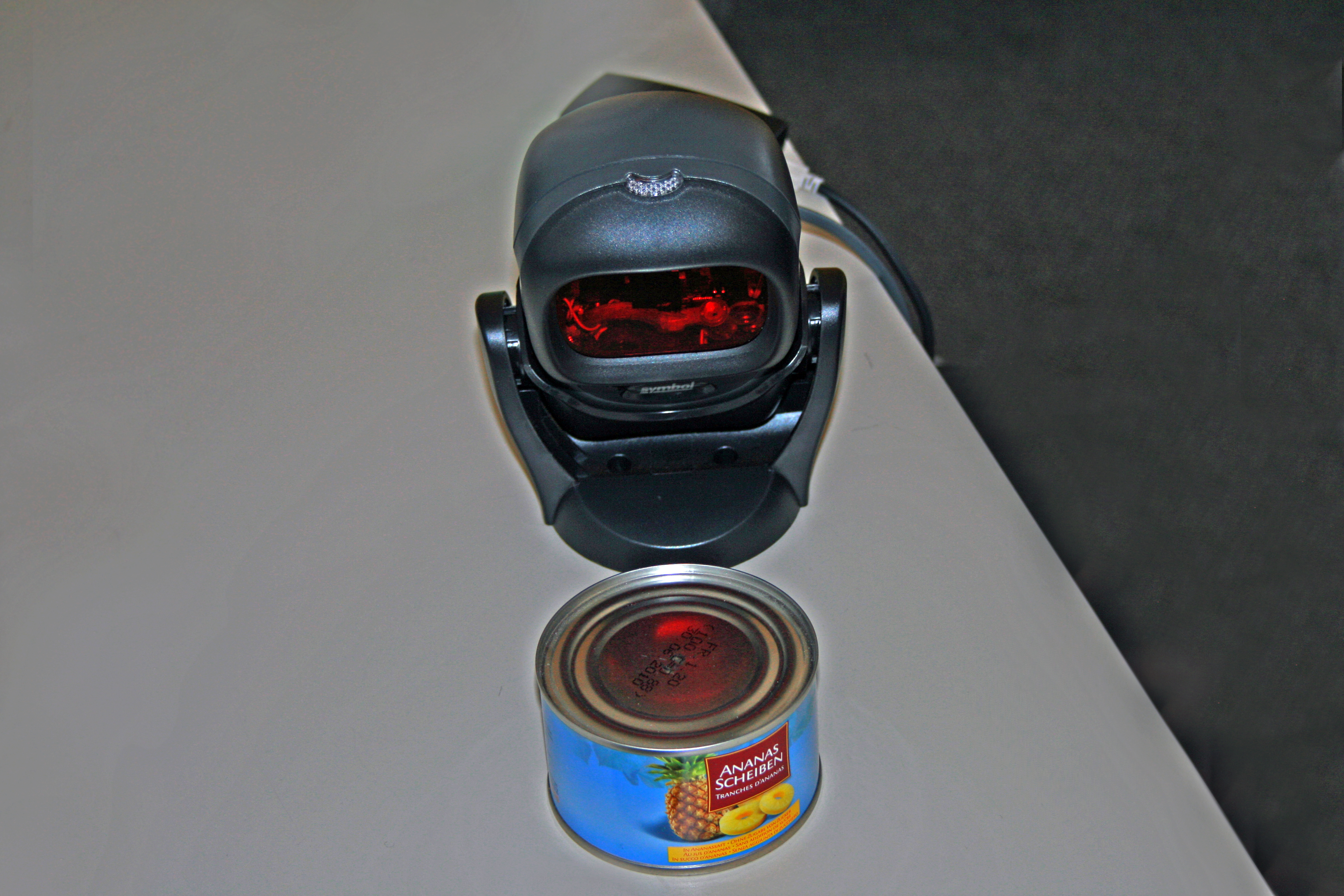
Scanners, which can not only read barcodes, but can read aloud what is contained within the packaging, have just been made available in Switzerland.
For blind people a device that reads food labels is a practical aid in the kitchen, but the database of products it can identify is still quite limited.
“So far the scanner can just read the barcodes of the [biggest] retailer Migros,” says Martin Mischler, IT consultant with the Swiss Association for the Blind. “But other retailers are working on making their barcodes readable too.”
“The aim is clearly that all barcoded products in Switzerland will one day be readable.”
Mischler, himself blind, demonstrates how to use the device. It looks like those used by cashiers at shop checkouts. It can be mounted on a stand or held in the hand.
For blind people the first challenge is to find the barcode on the product. Mischler slowly moves a packet of tea back and forth across a counter and turns it until the scanner emits a peep. “Peppermint tea, 70 grams,” says the electronic voice.
Tins and sweets
If a can or a bottle needs to be identified, the search for the barcode is even more difficult. Patiently Mischler turns the bottle until the scanner finally peeps and the man’s voice says “Aproz Medium mineral water, 500 millilitres.”
A packet of sweets causes particular problems. The surface is a little crumpled and the device does not recognise the code. Mischler smoothes the packet and eventually the scanner emits a peep and says “gumdrops, 200 grams”.
The scanner can’t read the codes on fresh products like vegetables or fruit. “The codes on these foodstuffs change almost daily,” says Mischler, adding that it was not yet possible to programme them.
The device, which costs around SFr500 ($468), has been available from the Swiss National Association of and for the Blind (SNAB), an umbrella body for organisations dealing with sight loss, since March.
Software
The commercially available scanner uses a software which reads the barcodes aloud by means of an MP3 player. “We chose this MP3 model because many blind people already have it,” says Mischler. German and French programmes are available.
It was agreed with Migros that in a first stage the scanner should be able to register the product name, quantity and a description.
In two years’ time wholesalers will introduce a new barcode, which will include much more information. “I would expect the best-before date to be included, or information for allergy sufferers,” added Mischler.
France has a similar system for reading codes for the blind, the IT consultant says. It is installed directly onto the computer, making it cheaper and easier to update. France is a pioneer in the field, as it had scanner checkouts in the 1970s, which were only introduced to Switzerland in the 1990s.
“The system we have chosen in Switzerland has the advantage that you don’t need a computer to use it,” says Mischler. “This means you can use it in the kitchen, and don’t have to go into the office to find out what is in your tin.”
But because the scanner database is constantly updated by the retailer, the end user also has to update the scanner software.
Migros’ support
For its part, Migros said that its support for the barcode reader scheme arose from its aim of helping improve conditions for all customers.
“We are convinced that through this we can, in a small way, do our part towards helping improve the quality of life of blind and visually-impaired people,” Migros spokeswoman Olivia Luginbühl told swissinfo.ch in email comments.
There are up to 100,000 visually-impaired people in the country.
As for the limited range, she said that the first phase of the project concerned scanner use by the blind and the strongly visually-impaired at home. This is why Migros has concentrated on products which were used over long periods of time in their original packaging, as they would need to be identified – and thus scanned – often.
“The current version of the barcode speech database therefore already includes around 25,000 (packaged) items in the milk, meat and bakery product sectors,” said Luginbühl.
“We willingly take into consideration the users’ wishes and needs for a further extension to the barcode speech scanner database and will continuously add in the items and ranges of goods that are missing.”
The retailer has further plans. “We are checking the usage of the scanners in our shops to support older and visually-impaired customers when shopping.”
Eveline Kobler in Zurich, swissinfo.ch (Adapted from German by Morven McLean and Isobel Leybold-Johnson)
The Swiss National Association of and for the Blind (SNAB) was established in 1903.
It is the national umbrella organisation for 60 member organisations, which are all active in the field of blindness.
The SNAB endeavours to give partially sighted, blind and deaf-blind people the opportunity to determine their own way of life.
There are no official statistics for certain forms of disability in Switzerland, but SNAB estimates there are around 80,000-100,000 visually-impaired people in the country.
8-10% are estimated to be over 74 years old.
The most common cause of losing one’s sight is age. Age-related macular degeneration is a medical condition which usually affects older adults and results in a loss of vision in the centre of the visual field.
Other causes are accidents and illnesses such as diabetes, cataracts, glaucoma, problems with the retina or pre-birth damage.

In compliance with the JTI standards
More: SWI swissinfo.ch certified by the Journalism Trust Initiative

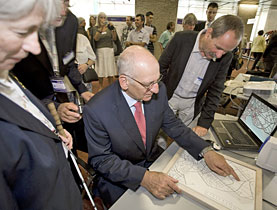
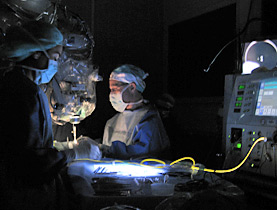
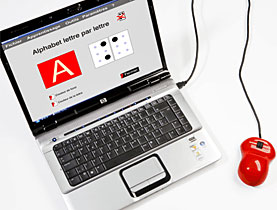
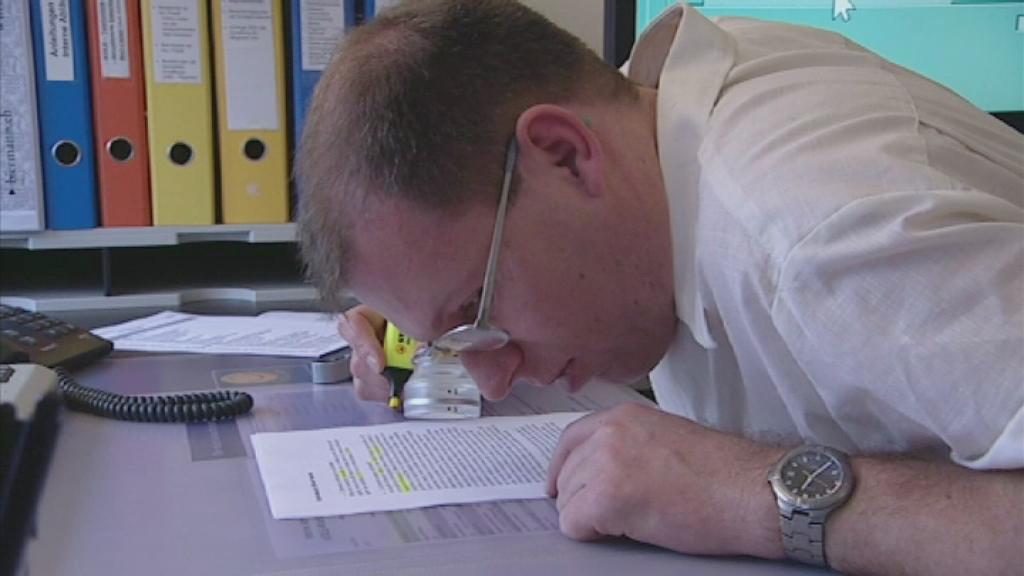
You can find an overview of ongoing debates with our journalists here. Please join us!
If you want to start a conversation about a topic raised in this article or want to report factual errors, email us at english@swissinfo.ch.